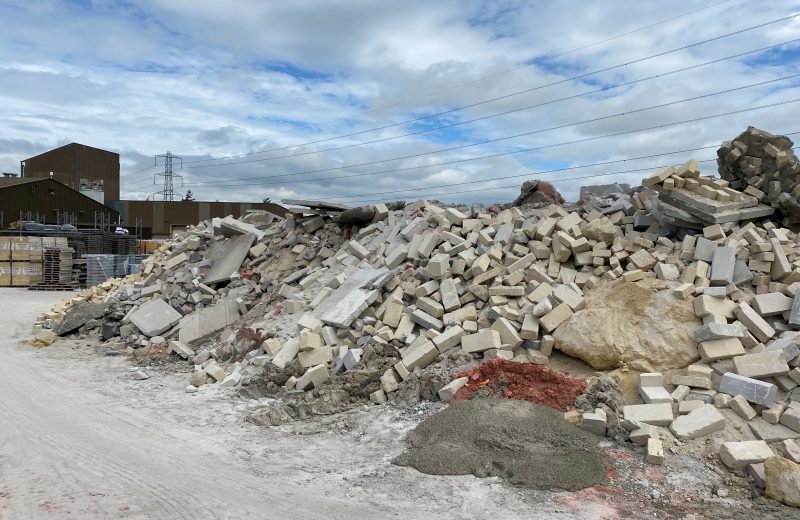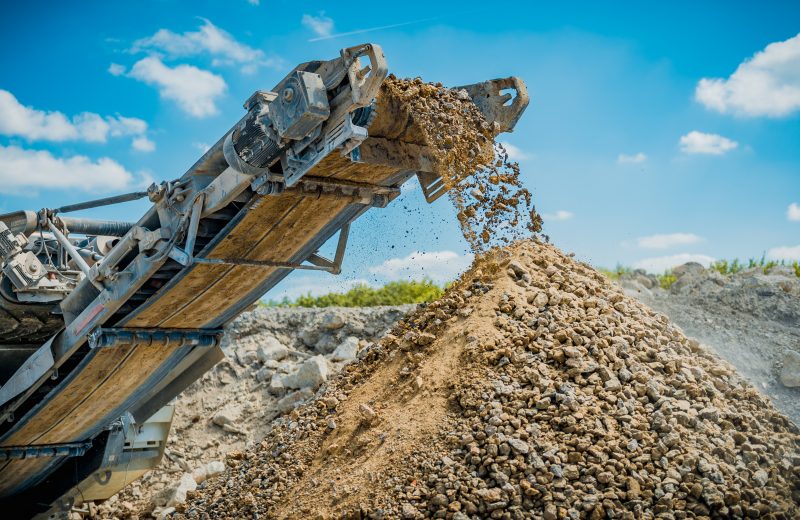Demolition. The word conjures up images of spectacular implosions, with crowds looking on in amazement as a towering building disappears into a cloud of dust. Building implosion is definitely the most exciting way to bring a structure down – but it’s by no means the most common. Let’s look at the techniques used to process decommissioned buildings.
How are Buildings Demolished?
Before we get to demolitions and processing demolition waste, a building needs to be brought down safely – and the biggest part of this process happens before a single piece of concrete is broken.
To find the most suitable way to demolish a building, it first needs to be surveyed.
The building’s use, presence of hazardous materials, square footage, construction materials and neighbouring properties all need to be considered as part of the survey. The condition of the building may also have deteriorated, making some techniques of demolition inadvisable.
After surveying, planning permission needs to be granted with a robust and thorough demolition plan. The plan must include the procedure for the demolition of the building, broken down in sequence, and the method of demolition to be used.
The plan must also outline the safety measures that will be put in place, how long the process is estimated to take – and the method for processing demolition waste, such as on-site concrete crushing and removal.
After planning is accepted, the process can begin with a thorough gutting of the building – removing hazardous materials safely and salvaging any useful non-structural materials (like pipes and fixtures) for future use.
Then, demolition typically takes place in one of these ways:
Manual Demolition
Walls and supports are broken down manually with a sledgehammer. It’s relatively cheap, but slow and labour intensive – and it can pose danger to the demolition operative. For these reasons, manual demolition is only suitable for very small structures or for altering portions of a domestic building, making it the most common type of demolition.
Excavator Demolition
Depending on the construction method and material, most small to medium-sized buildings can be torn down with an excavator – which can also be used to transfer demolition waste into a crusher or transport for off-site waste processing.
For tall structures where an implosion isn’t possible, a high reach excavator can be used. Different arm attachments, like hydraulic hammers or grabs, can be installed to the arm to break different types of material.
Site safety is paramount with this type of demolition as falling debris can be highly unpredictable, sometimes breaking off in enormous sections at once.
Wrecking Ball Demolition
Wrecking balls are an iconic demolition method – but did you know that they’re actually almost completely out of use in the UK? These huge weights were once the best method of felling buildings, swung from cranes into structures to knock them apart. Operators needed to be highly skilled to do a job quickly, carefully and without damaging the crane. Demolition balls have now been replaced with high reach arms.
Implosion
While it’s the most famous kind of demolition technique, implosions are quite uncommon in the UK – but when they are carried out, a building is topped in a matter of seconds.
However, the planning process is typically much more rigorous than slower methods of demolition, because of the use of explosives and the dangers posed.
Remotely controlled explosives are strategically positioned at key structural points around a building, to either topple it sideways (if room allows) or bring it down into an area no larger than its footprint.
K&B Crushers – Expert Concrete Crusher Hire
With our advanced fleet of concrete crushing equipment and experience in complex waste management, we’re nationwide experts in concrete crusher hire. To dispose of construction waste with K&B Crushers, talk to us today – call us now on 01235 769984.



